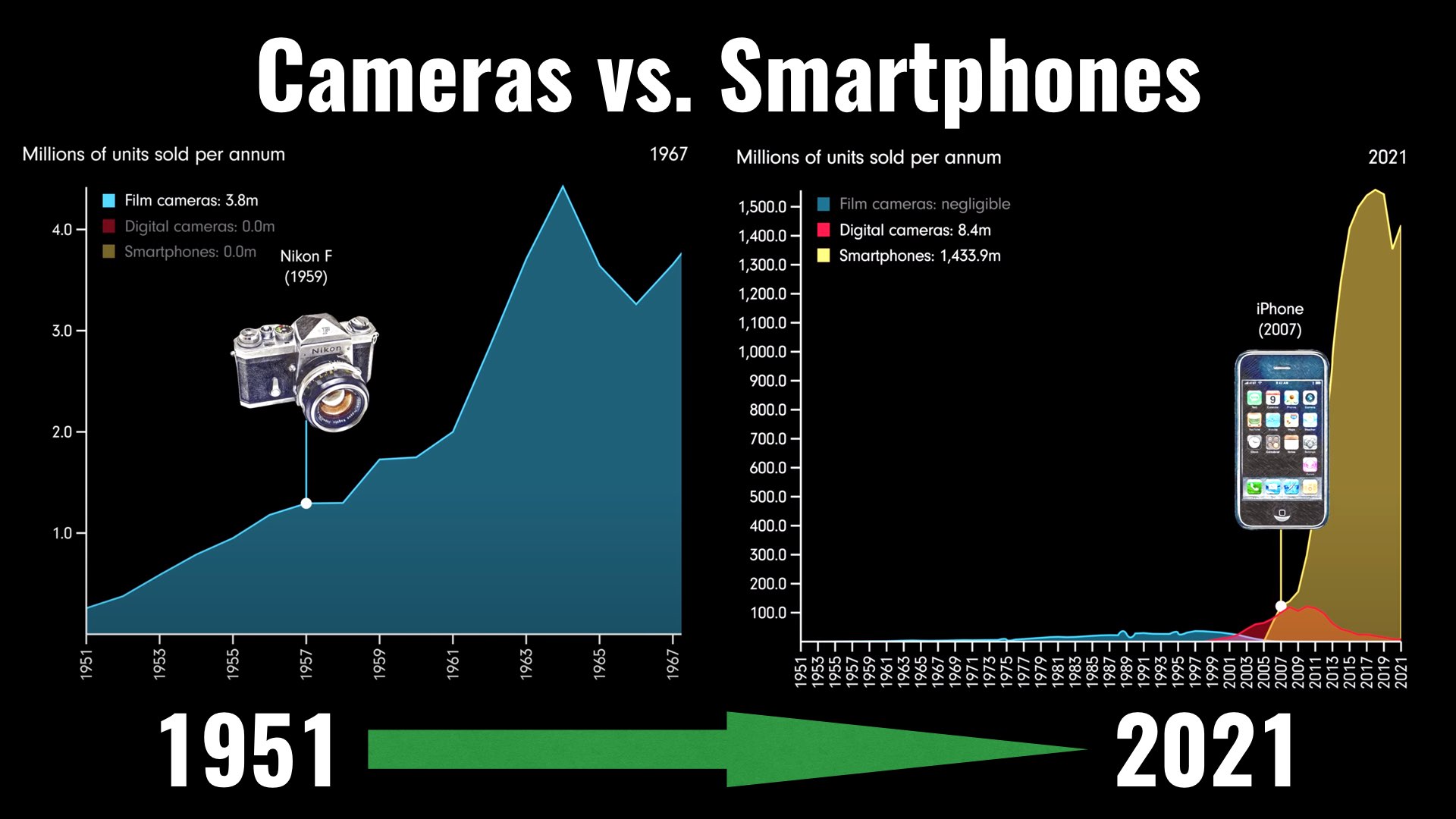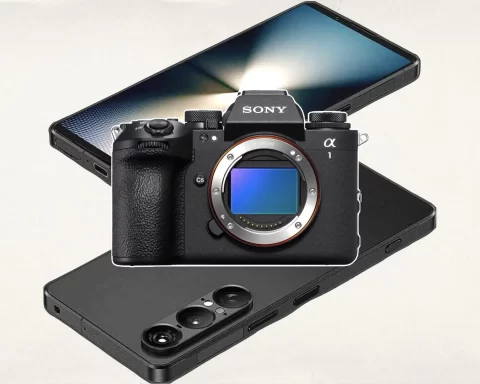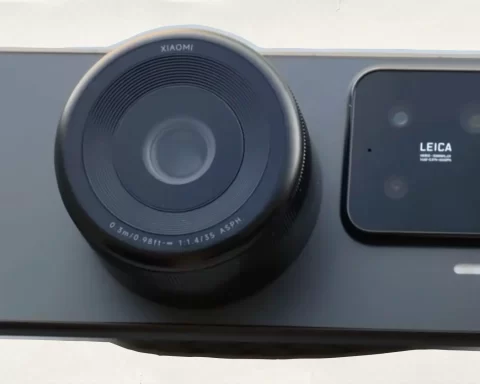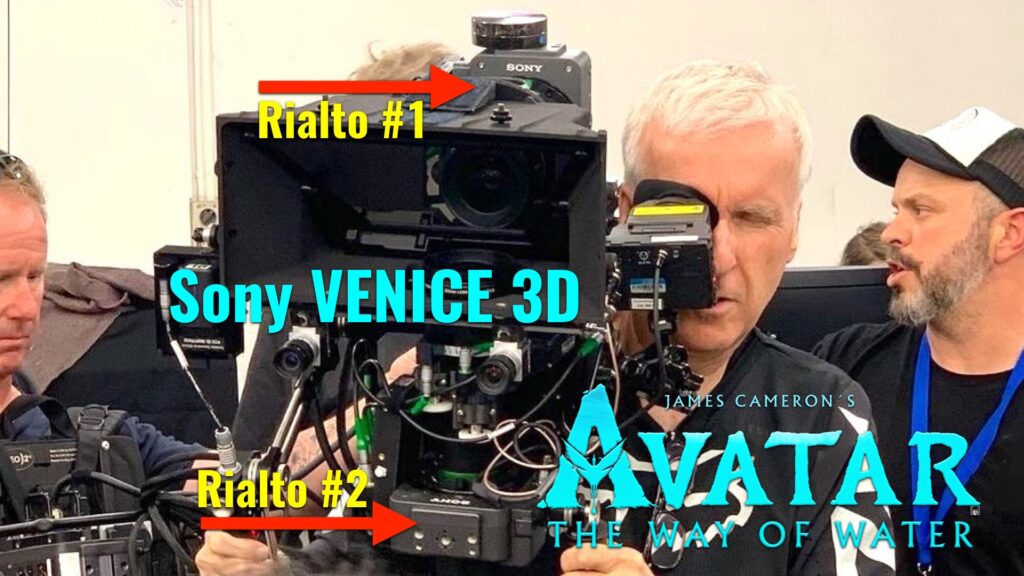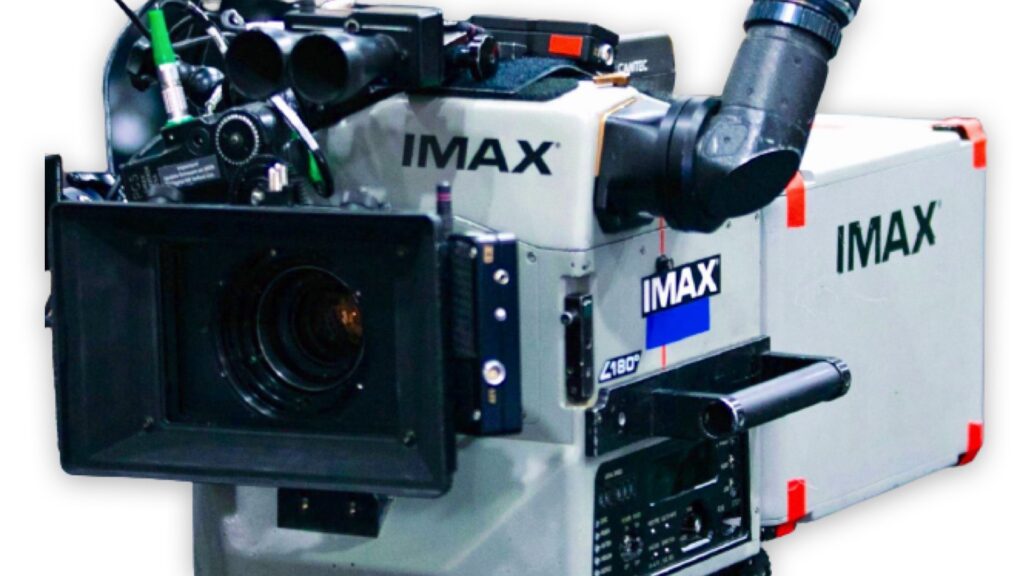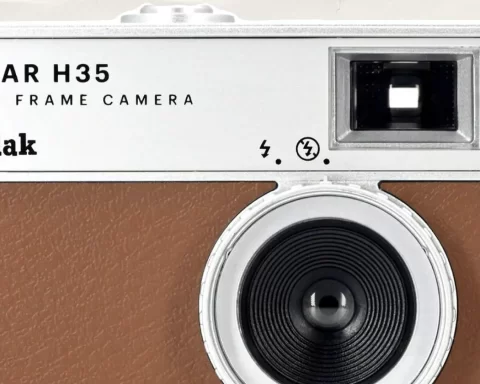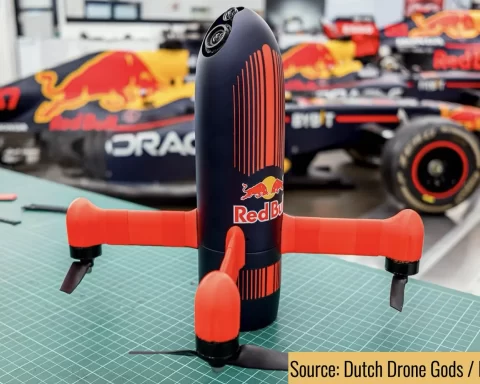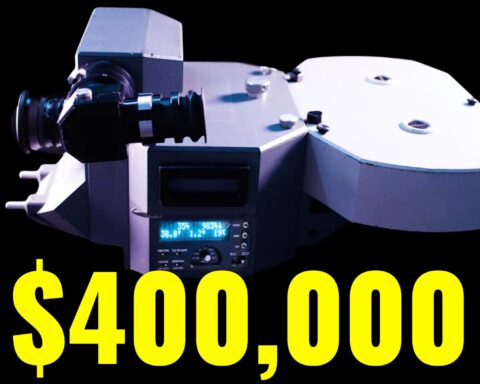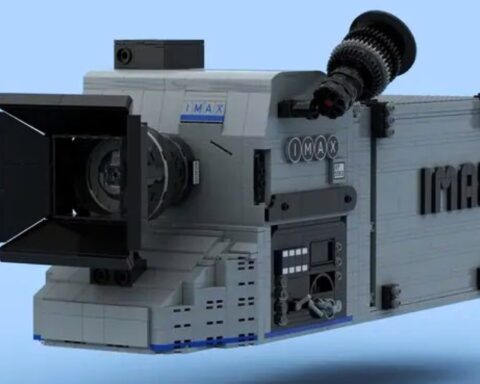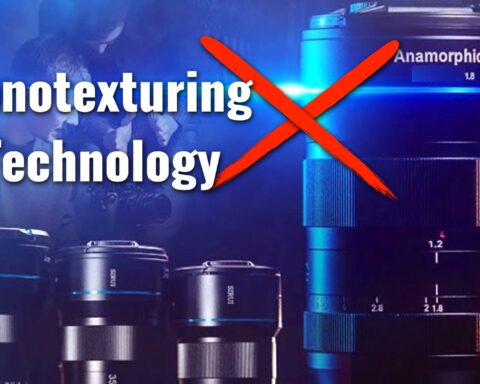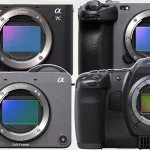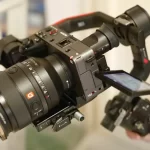In this very educating visualization, the impact of smartphones is well demonstrated. The video shows sales of cameras versus smartphones over the years 1951-2021. It’s short and fascinating. Watch it below.
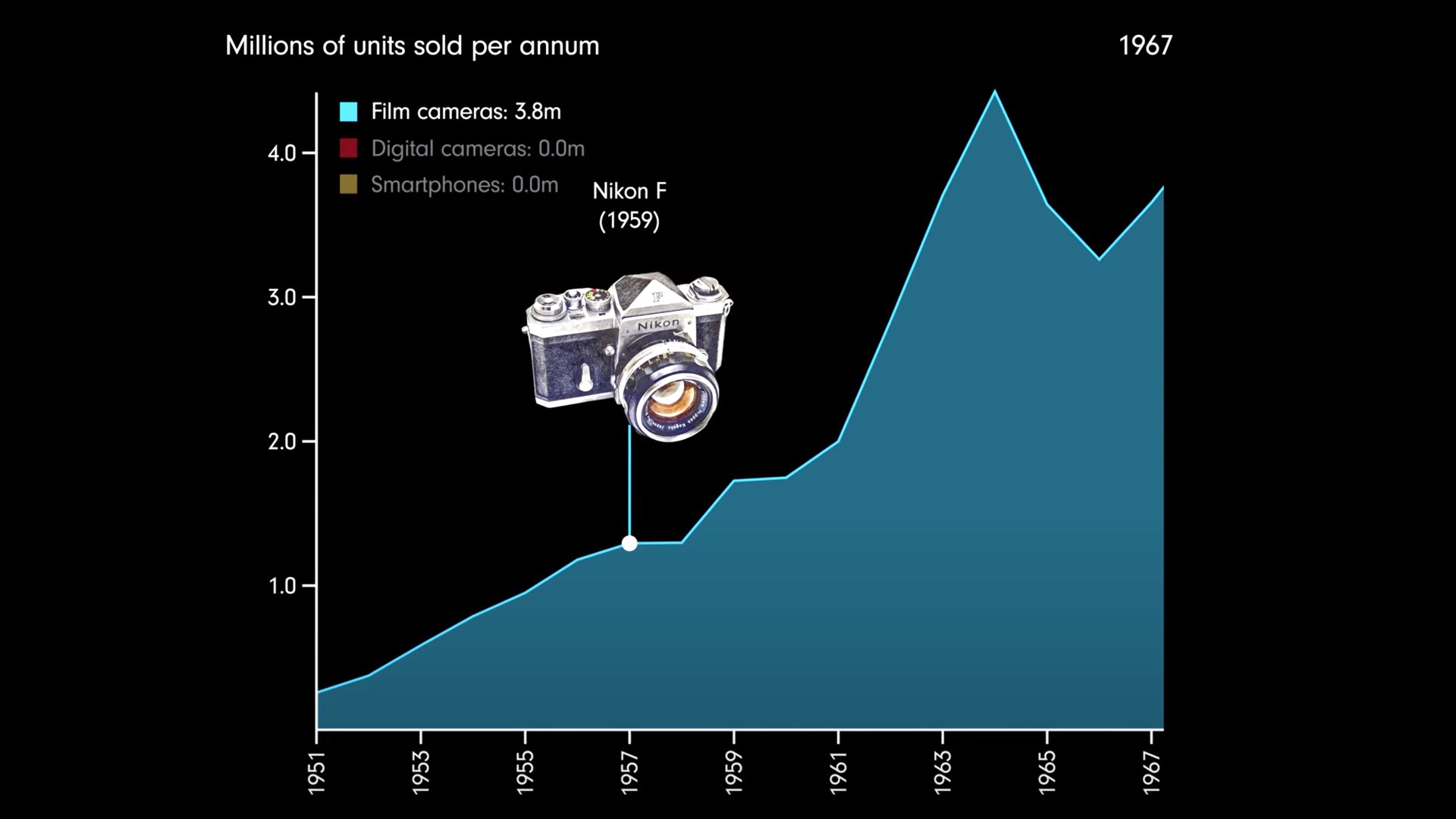
Cameras vs. smartphones
Although this is not a debate, at least not for our readers, it constitutes a pretty intriguing discussion. A fairly educating visualization was crafted by using multiple recourses (Idc, CIPA Japan, Gartner, and Canalys) by YT user James Eagle, which shows the taking over of smartphones, by negatively impacting camera sales. Yes, we know, it’s less relevant to filmmaking and cinematography, however, it’s very (VERY) fascinating to explore. As more and more manufacturers are ditching point-and-shoot camera development, modern smartphones bit them in almost every aspect. Even Panasonic and Nikon have quit developing low-end compact digital cameras since those can’t compete with the superior tech specs of the cameras implemented in contemporary smartphones.
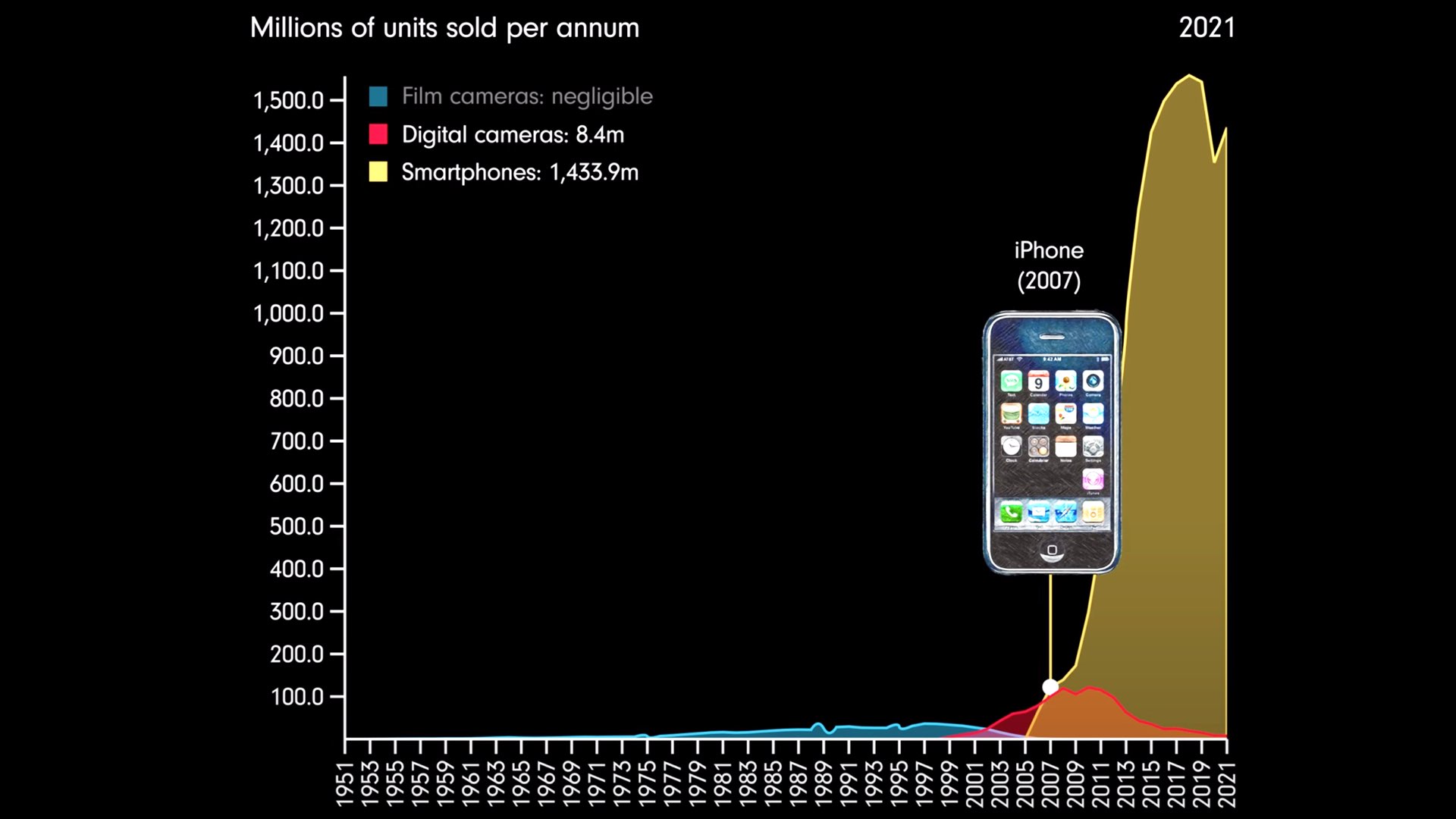
Massive drop in sales of cameras
The video was spotted by Image Sensors World. One of the comments states: “This video is interesting, but the background data, in this case, sales, need to be suitably normalized for it to have any meaning. I bet that a vast number of those smartphone sales are driven by people less interested in cameras, the overall 2-year refresh rate of contracts vs longer time investment for an SLR, and the multitude of other functionalities present in smartphones”. Another comment emphasizes that this visualization of the massive drop in sales of cameras as the phones appeared, similar to the drop in sales of film cameras when digital cameras appeared is what is shown. “Most people do no longer buy a still camera, they buy a phone for the same purpose” as the comment states. Well, watch it below and decide for yourself. The video is short, educating, and cool 🙂
Our two cents
It’s no secret that smartphones have a hell of camera specs executed in them that can do marvels in terms of imagery (video and stills). Even the iPhone 13 Pro was aimed at professional filmmakers with its ProRes capabilities and ultra-high resolution, plus high-tech features like Cinematic Mode. However, there’re limitations — for instance —the size of the sensor, lensing, and more dedicated functions that professionals need. But yes, the technology flows to that course. Take, for example, the Sony FX3, which I believe is the smallest cinema camera by definition. Making things smaller is one of the solid R&D efforts focused on today. Let’s see how it goes from here.
Get the best gift for filmmakers!
Y.M.CINEMA 65 – Stainless steel art piece of 65mm motion picture camera: BUY on YMCinema

